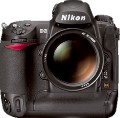By guest blogger and photographer Ted Dayton, of Santa Clarita
This is the first in a series of my photography tips that are more like commentaries meant to inspire you toward photographic excellence – your own brand of it – by talking about the mechanics of good image making and about the intangible things good photographers know from years of experience. These have become parts of their tool kit, called Instincts or Sensibilities or Style. These are all things a photographer cannot purchase. (There is no “Instincts” shelf at your local camera store.)
I am an occasional carpenter. I have a few power tools and a rudimentary understanding of how to build something. I can cut wood, drive screws, and hammer nails. I built the table in my kitchen. It is completely functional, built to last, looks nice enough. But a real carpenter would know that it is not fine furniture; it has very little character. It works, but it is not beautiful and it draws no comments from visitors.
If you are a photographer, I bet you know where I am going with this. If you want to become a very good photographer, you must develop vision, finesse and style. If you want to make truly meaningful images that hold up through time in a spiritual sense, you must move beyond what you know and keep going. You must insist upon an honest effort every time you open your camera bag. You must work at it.
Good photographers are good because they have worked hard for a long time. Whatever skills I possess are the result of 36 years of trying to get better, simple as that. I hope you enjoy my occasional comments and that they help you make ever-improving images that look better than my kitchen table.
Camera in Auto Exposure Mode, Brain in Manual, Eyes Out There
Stop looking at your camera and look through it. If you ever used a film camera, you know exactly what I mean. Until digital photography came along, we never looked at our cameras; we through them. Sometimes the best shot is just a moment away. Pay attention to what’s happening out there and be ready. It might be the perfect instant when a facial expression is best or it might be the moment when a group of people walking by create a great composition relative to one another.
This emphasis develops timing and instincts and skills that good photographers relied on ‘way back in the early 90s. The 1990s! There is no magic in the camera or in Photoshop or in your printer. The magic in truly great images comes mainly from the photographer and some from the subject, so try to spend more of your shooting time concentrating on what is happening, out there.
Put your camera into Aperture Priority Mode
Why Aperture Priority? The impact of most images relies more on the look provided by the aperture setting than by the shutter speed. F 2.8 and F 16 look very different – remember depth of field?
Since we’re talking about a visual medium, how it looks affects how it feels to the viewer. Remember him? Her? We don’t shoot just to shoot – we shoot to make an image worth looking at, one that holds the veiwer’s attention.
Select an aperture that suits your needs and allow the camera to fine tune the exposure according to changing lighting conditions. The point is that your attention is not on the technical aspects of the shot – concentrate on content and feeling and what is happening.
Auto exposure modes weren’t created for lazy shooters; they were created for excellent shooters who need equipment that supports their creative instincts. If your image calls for f-5.6, don’t give a thought to changing light levels that cause some images to be recorded at f 4.5 or 6.3. These numbers are not more important than what is happening out there. Camera in Auto, Brain in Manual.
Think of it like driving on the open road where you use the cruise control to keep you at the speed limit but you still have to keep your hands on the wheel and your eyes out there, on the road.
You are the image-maker. The camera is just the recording device. Lance Armstrong is right: it’s not about the bike.
Ted Dayton
See details on our new workshop coming up, “Getting the Most out of your Desktop Inkjet Printer“

